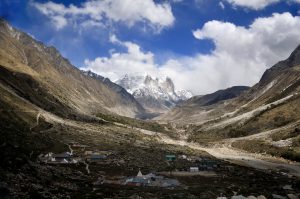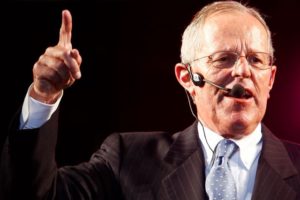When US President Barack Obama hosts Prime Minister Narendra Modi to a working lunch on June 7 at the White House, climate change – and the ways the two nations can step up efforts to mitigate its worst effects – are likely to figure prominently in their conversation.
Although American business has a keen interest in India’s big plans to grow its nuclear and solar energy sectors that have the most immediate impact on global warming, there are a few contentious issues that the two leaders would look to smoothen for quicker action.
A major announcement is expected on nuclear energy, which India sees as a cleaner option to burning fossil fuels. New York-listed Westinghouse has agreed to build six nuclear reactors in the southern state of Andhra Pradesh for the Nuclear Power Corporation of India, a breakthrough deal that is expected to be finalised during Modi’s June 6-8 visit.
It will be the first commercial agreement after India and the US signed the historic civil nuclear agreement in 2005 that ended India’s long isolation from the international nuclear community. In January 2015, when the US President had visited India, Obama and Modi had resolved differences on fixing liability if there is an accident at an atomic power plant. This was followed by a civil nuclear pact with Japan in December 2015 that allowed Westinghouse’s parent company, Toshiba, to negotiate a business arrangement.
Solar squabbles
On solar energy, things are not as bright. The increasing bilateral collaboration has stumbled in recent times due to a trade dispute over the import of solar panels and modules used in India’s National Solar Mission (NSM), a government scheme that aims to deploy 20,000 MW of solar power that would be connected to the electricity grid by 2022.
The World Trade Organisation (WTO) in February ruled in favour of the US, saying that the domestic content requirements of the NSM that stipulated that certain cells and modules have to be made in India were not consistent with its rules. In April, India decided to appeal against the ruling.
The WTO’s stance has been criticised by environmentalists. “Today, we have more evidence of how free trade rules threaten the clean energy economy and undermine action to tackle the climate crisis. India’s national solar programme has driven dramatic growth of India’s solar capacity that will help reduce its reliance on dirty coal and spur the development of new clean energy jobs,” Ilana Solomon, Director of Responsible Trade Programme at the Sierra Club, an American environmental organisation, had said in an August 2015 statement in response to a preliminary ruling of the WTO. “The US should be applauding India’s efforts to scale up solar energy – not turning to the WTO to strike the programme down.”
“The United States strongly supports the rapid deployment of solar energy around the world – including in India. But discriminatory policies in the clean energy space in fact undermine our efforts to promote clean energy by requiring the use of more expensive and less efficient equipment, raising the cost of generating clean energy and making it more difficult for clean energy sources to be competitive.” US Trade Representative Michael Froman said in February 2016.
The US government went to the WTO despite the January 2015 agreement between Modi and Obama in New Delhi to ramp up clean energy development in India.
See: India holds on to climate card
See: Obama’s climate diplomacy: the dangers of bilateralism
Building on strong initiatives
It now remains to be seen whether Modi and Obama are able to iron out their differences and build upon the several other initiatives that the two nations have launched in recent years. At their first bilateral summit in September 2014, the leaders had agreed to a strategic partnership on energy security, clean energy and climate change. They had agreed to expand the successful US-India Partnership to Advance Clean Energy (PACE) through a series of initiatives, including a new Energy Smart Cities Partnership to promote efficient urban energy infrastructure; a new programme to scale-up renewable energy integration into India’s power grid; an expansion of the Promoting Energy Access through Clean Energy (PEACE) programme to unlock additional private sector investment; and the formation of a new Clean Energy Finance Forum to promote investment and trade in clean energy projects.
At that time, the US Export-Import Bank and the Indian Renewable Energy Development Agency had signed an agreement to make available USD 1 billion in financing to bolster India’s efforts to transition to a low-carbon and climate-resilient energy economy, while boosting US renewable energy exports to India.
In light of the Paris climate agreement in December 2015, it is expected that Modi and Obama will adopt a pragmatic approach to jointly tackle global warming. It is likely that the US will support India in achieving its renewable energy goals, despite trade concerns. In Paris, India pledged to increase the share of non-fossil based electricity generation capacity to 40% by 2030.
“The combination of need and ambition by the current Modi government has created the biggest single-country renewable energy market in the world, and hence the biggest investment opportunity,” Andrew Light, Distinguished Senior Fellow at Washington DC-based World Resources Institute, wrote in a blog post on June 1. “The stakes for failure are immense. There are far less sustainable pathways for overcoming India’s energy access problem than the current government’s ambitious plans on renewable energy. Modi and Obama can chart a cooperative course next week toward a more sustainable future for us all.”
![<p>Narendra Modi with Barack Obama, at the White House, on September 30, 2014 [image by Press Information Bureau]</p>](https://dialogue.earth/content/uploads/2016/06/Prime-Minister-Narendra-Modi-and-US-President-Barack-Obama-had-a-successful-bilateral-summit-in-September-2014.-photo-by-Press-Information-Bureau.jpg)







